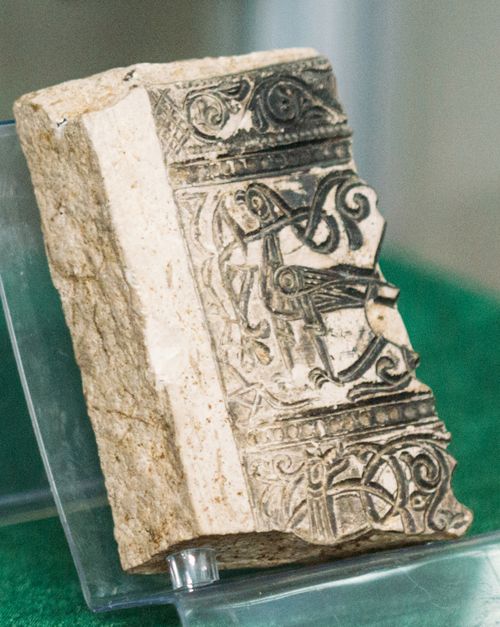What archeologists excavated in Chernihiv
Jewelry molds, fragments of the 12th-century Syrian, Iranian, Chinese, and Byzantine chinaware…
A new exhibit at the National Architectural and Historical Preserve “Ancient Chernihiv” shows the way Chernihiv residents lived in the Kyivan Rus’ and medieval era, stages of the development of one of our country’s most ancient cities, and some interesting artifacts. It displays the valuable and even unique items archeologists excavated on the territory of Chernihiv in 2014-17.
Among the exhibits is a late-12th-century jewelry mold to make bracelets that depict a bird and a dragon, an early-to-mid-17th-century silver signet of a senior Cossack officer, fragments of the 12th-century Syrian, Iranian, and Chinese chinaware and Byzantine glassware, as well as household items, weapons, ornaments, and building materials. These objects can tell us very much about almost all the spheres of residents’ life: everyday routine, production, trade, fashion, and even bad habits. Photographs complement the exposition and illustrate “Ancient Chernihiv’s” architectural and archeological studies for half a century.
“The Chernihiv archeological expedition conducts a search in two directions: it explores the ancient architectural monuments that have survived on the territory of our city and studies the so-called blank spots in history. In particular, a whole epoch – the post-Mongolian era – is a great puzzle,” says Olena CHERNENKO, archeological expedition chief, Candidate of Sciences (History), associate professor at the National Taras Shevchenko University “Chernihiv Collegium.”

The academic says that archeologists worked in 2014 in the so-called cape – formerly, the territory of the Yelets Holy Dormition Monastery. Presumably, there was an ancient hillfort there, from which the history of Chernihiv began. The expedition’s results show that the settlement that existed there did not play an important role. The archeologists explored the remnants of a rather large 12th-13th-century structure and found a lot of imported amphorae and household items. This structure may have belonged to a wealthy trader. Another interesting architectural object that survived beneath the surface is a stone wall of the Holy Dormition Monastery. It used to have two lines of fortifications, and this, first, one must have been built by an expert.

On the territory of Dytynets, archeologists focused on little-explored segments. Last year excavations were carried out in the courtyard of the Borys and Hlib Monastery, where the researchers found, at the depth of only 30 cm, a cultural stratum that represented the entire history of Chernihiv. They found an Ancient Rus’-period adobe oven with a semi-dome vault. Some remnants of foundation pits and a large 19th-century stone structure, which is not indicated on the city plan, were found near the Regimental Chancery. One more structure dates back the 12th century – archeologists excavated there a lot of fragments of glassware and, nearby, a jewelry mold for making wrist bracelets.

“That was a sign of high status worn by well-to-do men and women,” Chernenko explains. “Our mold is a fragment. But we can see the image of a bird on it. Archeologist Volodymyr Bohusevych once presumed that the bird and the dragon might be heraldic emblems of the Chernihiv dynasty princes. We can see the head of a sharp-toothed and eared beast – it is a dragon in the wickerwork. Unfortunately, no bracelet made in such a mold has been found so far. A very refined carving testifies to the mastery of the jeweler who made this mold. It is the so-called wax technology of making.”
Archeologists continued to explore this area in 2016, minutely examining the pits of the 17th-18th-century structures, where they found a lot of material objects, such as tableware, smoking pipes, tiles, etc. They found another post-Mongolian-era oven – to be more exact, a little piece of it. Interestingly, it was built with the plinthite of a structure still unknown to our archeologists. Probably, the structure was damaged or ruined during the Mongolian invasion, and local residents began to cannibalize bricks for household purposes and built this oven. Another incredible discovery the Chernihiv archeologists boast about is the original wall of the Antonian Caves with a large fragment that clearly shows the Ancient Rus’-era plasterwork. So a lot of discoveries and surprises are in store for visitors.
Newspaper output №:
№11, (2018)Section
Time Out





